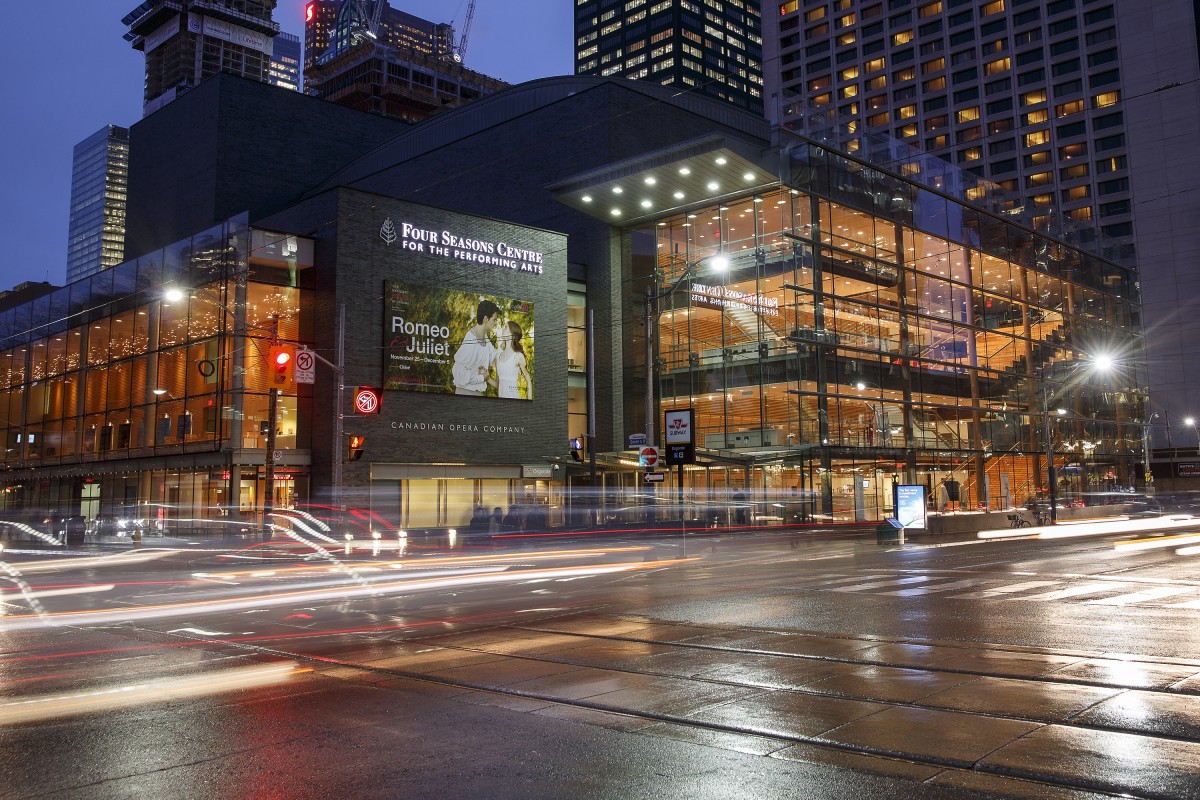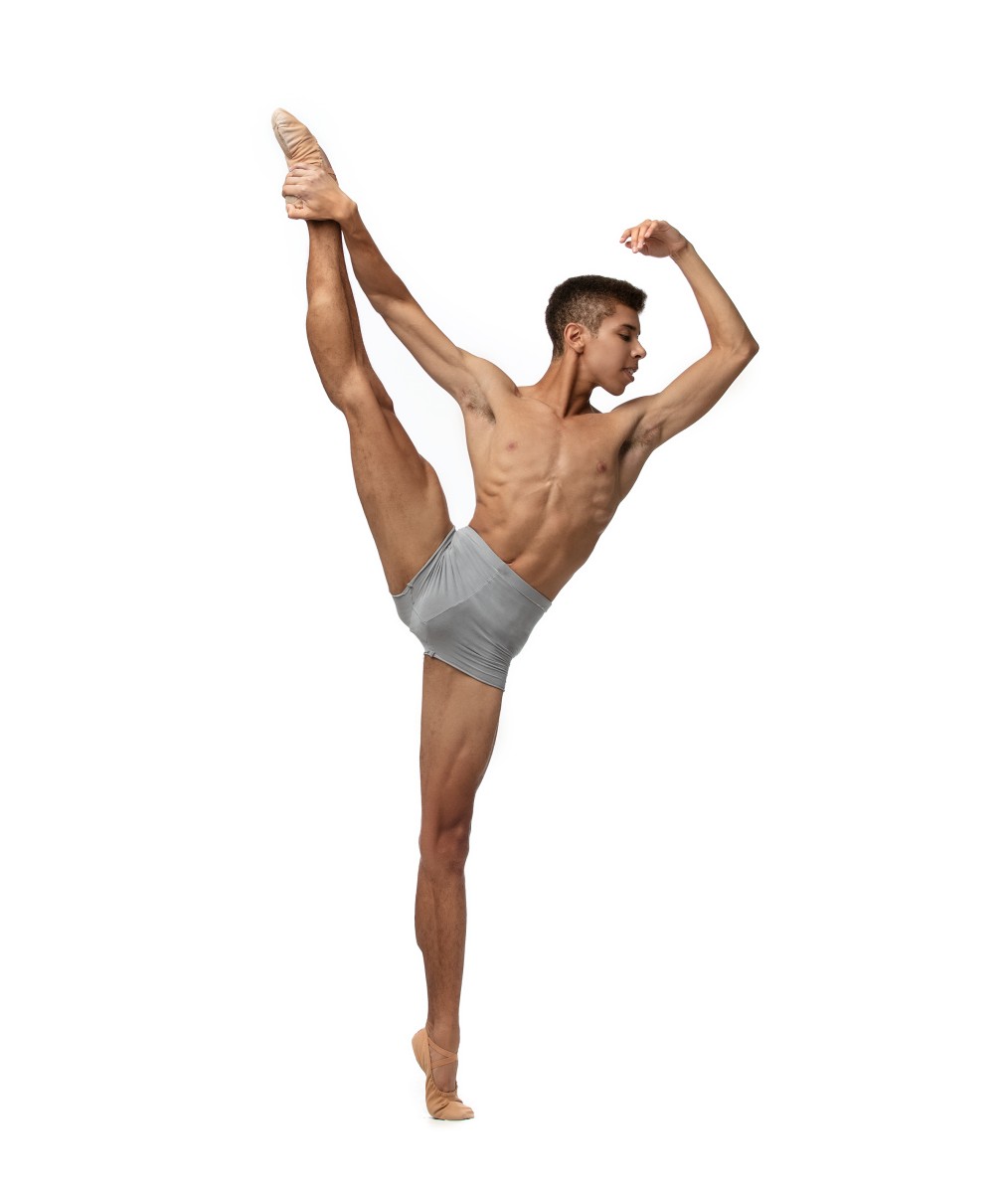A picture painted en pointe
The National Ballet of Canada explores how art can move us in this month’s AGO Virtual School sessions.

Hannah Galway Photo credit Karolina Kuras.
How can dance paint a picture? The National Ballet of Canada will show us as part of this month’s AGO Virtual School Program. On May 19 and 26, National Ballet dancers will grace our screens and stretch our senses with movements inspired by artworks from the AGO Collection. As we look forward to getting up and moving our bodies, we chatted with the dancers leading the sessions, Second Soloist Hannah Galway and Corps de Ballet member Alexander Skinner, to find out what dance means to them and how they see it intersecting and overlapping with visual arts.
AGOinsider: When did your love for dance begin?
Galway: My love of dance started at a very young age. I took classes in jazz, ballet, tap, modern and musical theatre after school. During those years, I learned how powerful dance was and what joy it brought me. When I joined Canada’s National Ballet School and was surrounded by inspiring teachers, musicians and like-minded peers, I fell in love with all the nuances of the art form.
Skinner: My love for dance began before I can even remember. For as long as I can recall, movement has always piqued my interest and drawn me in. There’s something both incredible and indescribable about what I feel when I’m dancing. It’s like I am the most connected to myself, aware of every part of my being. While I don’t recall exactly when my love for the art form began, my parents have a memory of me as a toddler mimicking one of Elvis Stojko’s routines from TV. I was too young at the time to remember the moment, but I think it must’ve been one of the first signs dance would become a part of my life.
AGOinsider: What makes dance so expressive?
Galway: Dance has many qualities that allow the artist to express themselves creatively. The body is capable of so much expression. I feel there are limitless possibilities to explore with my body and its relationship to my emotions. When paired with music, I believe dance to be a powerful tool that can evoke strong feelings, not only in the artist but also in the audience. It is that shared experience that can be so moving and so intimate.
The challenges that dance has for creative expression have become more evident during the pandemic. It is an art form that usually requires many people to work closely together for one vision. The presentations typically are in a theatre and this hasn’t been possible during this past year. Dancers need to train with each other many hours a day to present their art form.
Skinner: Dance is boundless, existing in a way that makes it borderless to limitations. There’s freedom in dancing; freedom to tell a story, to entertain, to relay a message, to share a thought, to make a statement as well as freedom to just be. It’s a beautiful vehicle for creative expression.
With any art form, there’s always the possibility that the idea trying to be conveyed doesn’t come through. While that could be viewed as a challenge, it also enables a variety of perspectives and interpretations, which is one of the beautiful outcomes of art. The ability to move, to spark a reaction, and to create dialogue is a part of what makes art so special.
AGOinsider: What excites you about explaining visual art through dance?
Galway: The opportunity to have a dialogue between visual arts and dance is so exciting. To draw from a visual piece of stimulus to create a movement vocabulary is challenging. I believe it encourages you to look deeper, in order to translate it into something your body can do. It allows for an opportunity to be more mindful of how something makes you feel and for the viewer to also see another layer to each art form.
Skinner: I’ve always been captivated by the way visual art can evoke emotions from those who witness it and also how variedly it can be interpreted. There are times when I recognize why a work of visual art moves me. And there are other times when I can’t pinpoint exactly why. I simply rest content knowing I’ve been moved. What excites me about explaining visual art through dance is the emotion or thought evoked from the artwork can become a source of inspiration for the movement vocabulary that follows – like a seed that never stops growing or a galaxy that keeps on expanding. The amount of inspiration visual art can create is limitless, much like the feelings and emotions it can evoke.
AGOinsider: How do visual arts and dance communicate with each other?
Galway: They are both visual mediums but with painting or sculpture, you have the ability to go back to see them again and again. Yet, despite dance’s fleeting nature, it can create feelings or emotions that stay with the viewer long after it has been seen. What I think about is the dichotomy between the everlasting nature of most visual arts versus the fleeting visuals created from dance. I think they complement each other in this way, as it allows for an appreciation for both continuous and brief moments of pleasure and joy.
Skinner: There are similar qualities between visual arts and dance: line, shape, form, movement, rhythm, pattern, balance, tone, space, emphasis, unity and variety – to name a few. Such qualities can be translated from one art form to the other, as well as work together in complementary ways.
Last fall, I had the opportunity to rehearse and perform Robert Binet’s The Dreamers Ever Leave You, a piece inspired by the work of Lawren Harris, originally presented at the AGO in 2016. It was my first experience dancing choreography directly influenced by works of visual art and it gave me a new perspective on the potential of a relationship between the two art forms. Seeing how the qualities of Harris’s work translated into the choreography, the lighting, the music and the costumes, was exciting. It also challenged me in a new way as a dancer in sourcing my inspiration from a different medium than the one I was familiar with.
Details about how to register for these and other exciting AGO Virtual School Programs can be found at AGO.ca/visit/group-visits/virtual-school-program
Virtual School Programs
Virtual School Programs
Generous Support
Generous Support
Generous Assistance
Generous Assistance


